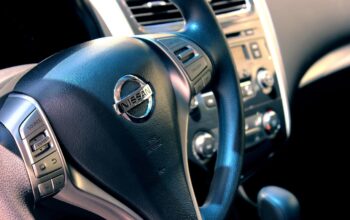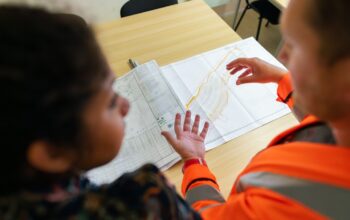The automotive industry is undergoing a radical transformation, driven by technological innovations and shifting consumer demands. Here are five trending stories in automotive engineering that are shaping the future of mobility:
Sustainable Coatings and Precision Painting
Imagine a car with a custom paint job that’s not only visually stunning but also eco-friendly. Ford is pushing the boundaries by using UV-curable inks for detailed graphic applications. These inks can withstand thermal bake cycles and integrate seamlessly under automotive clearcoats, enhancing sustainability and efficiency in manufacturing. This technology allows for precision painting, enabling the production of specialty finishes without the need for traditional full-body paint lines.
UV-Curable Coatings by Toyota Industries Corporation
Toyota Industries Corporation has made a groundbreaking achievement with the world’s first single-layer, UV-curable hard coating for plastic glazing in vehicles. This innovative coating replaces the traditional three-layer system, simplifying the process while significantly reducing carbon emissions by 80% and costs by 40%. It’s already being tested in real-world conditions on the Lexus hydrogen-powered off-road vehicle, contributing to the development of lighter, more efficient vehicles.
The Rise of Electric Vehicles (EVs)
The electric vehicle market is experiencing rapid growth, driven by advancements in battery technology and powertrain efficiencies. Innovations in silicon carbide and gallium nitride power devices are expected to catapult BEV technology forward, ensuring continued market expansion. By 2025, these advancements will push the boundaries of EV performance and efficiency, making them more appealing to consumers.
Automation and Vehicle Electronics
Level 2 vehicle automation, where vehicles assist drivers with steering, braking, and acceleration, is set to become mainstream by 2025. This transition will elevate demand for advanced processors and memory devices, reshaping the competitive landscape of vehicle automation. Additionally, China is leading the integration of advanced electrical/electronic architectures, enabling a more flexible and connected driving experience.
AI and 3D Printing in Manufacturing
Ford’s Kentucky Truck Plant is leveraging AI and 3D printing to revolutionize production efficiency. The plant uses a smartphone-based AI system for quality control, enhancing manufacturing processes and ensuring precision in vehicle assembly. This integration of cutting-edge technologies streamlines production, reducing errors and increasing productivity.
Sustainability, automation, and innovation are driving the automotive industry forward, transforming the way vehicles are designed, manufactured, and driven. These trends highlight the industry’s commitment to a more efficient, connected, and environmentally friendly future for mobility.
References:
- https://www.coatingsworld.com/contents/view_breaking-news/2025-05-06/radtech-announces-2025-automotive-innovation-radlaunch-winners/
- https://www.techinsights.com/blog/automotive-tech-trends-what-expect-2025
- https://boards.autodesk.com/automotive-innovation-forum/design-studio-bdaa
- https://www.designnews.com/automotive-engineering
- https://www.designnews.com/automotive-engineering/fords-kentucky-truck-plant-embraces-ai-3d-printing-for-enhanced-vehicle-production
- https://www.prnewswire.com/news-releases/amsted-automotive-brings-its-advanced-powertrain-efficiency-solutions-and-metal-forming-capabilities-to-china-for-tmc-2025-302473450.html
- https://custom-writing.org/blog/science-and-technology-essay
- https://www.autocarpro.in/opinion-blogs/top-automotive-aftermarket-trends-to-watch-in-2025-126882



